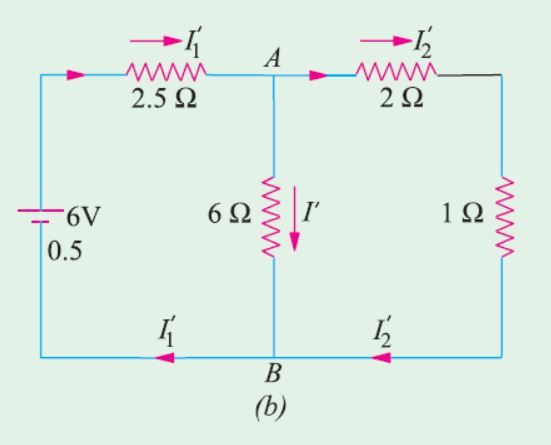Superposition Theorem
Superposition Theorem
According to this theorem, if there are a number of e.m.fs. acting simultaneously in any linear bilateral network, then each e.m.f. acts independently of the others i.e. as if the other e.m.fs. did not exist. The value of current in any conductor is the algebraic sum of the currents due to each e.m.f. Similarly, voltage across any conductor is the algebraic sum of the voltages which each e.m.f would have produced while acting singly. In other words, current in or voltage across, any conductor of the network is obtained by superimposing the currents and voltages due to each e.m.f. in the network. It is important to keep in mind that this theorem is applicable only to linear networks where current is linearly related to voltage as per Ohm’s law.
Hence, this theorem may be stated as follows :
In a network of linear resistances containing more than one generator (or source of e.m.f.), the current which flows at any point is the sum of all the currents which would flow at that point if each generator where considered separately and all the other generators replaced for the time being by resistances equal to their internal resistances.

Explanation :
In Figure (a) I1, I2 and I represent the values of currents which are due to the simultaneous action of the two sources of e.m.f. in the network. In Figure (b) are shown the current values which would have been obtained if left-hand side battery had acted alone.

Similarly, Figure shown below represents conditions obtained when right-hand side battery acts alone. By combining the current values of Figure (b) and figure , given below, the actual values of Figure (a) can be obtained.
Obviously, I1 = I1′ − I1”,
I2 = I2” − I2‘,
I = I′ + I′′.

Read article – Units of Resistivity
Visit NCERTplanet.com for NCERT solutions and Textbook downloads



